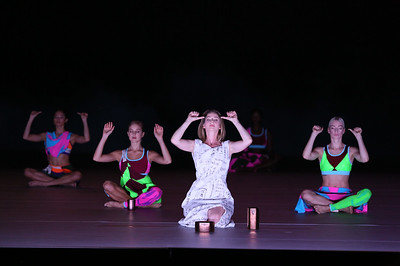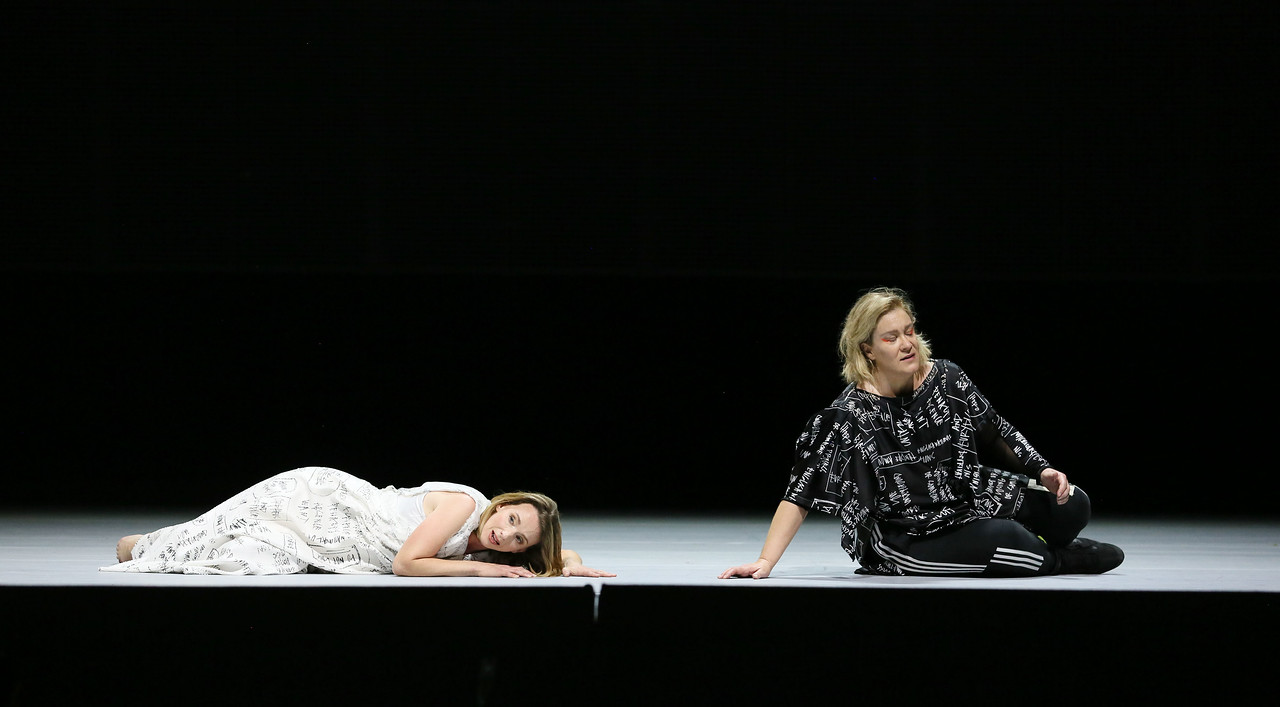London Coliseum, Tuesday 1 October 2019
The ENO’s ambitious Orpheus project has been launched with Gluck’s masterpiece Orpheus and Eurydice. So far, so good, and thankfully the musical side of the performance is everything one might wish for. Though the edition being used comes via Berlioz, bringing a larger modern orchestral sound, Harry Bicket’s brisk conducting drives the score forcefully and there is much fine playing to enjoy. The soloists are equally splendid. Even though we were asked to indulge Alice Coote as she had been suffering from a throat infection there was no hint of this in her impassioned reading of Orpheus. Equally strongly cast were Sarah Tynan as a waiflike Euridyce and Soraya Mafi’s bright Love.
The ENO chorus seemed to be in good voice but as they were banished off-stage throughout it was difficult to get any sense of nuance from their singing. This decision seemed to reflect Wayne McGregor’s whole approach to the work. Though the opera has a large amount of dance in it, it is not a ballet. The interaction between Orpheus and the rest of the world is a key element of Gluck’s writing. In this production Orpheus does not face any other living human beings. Consequently there is no dramatic action on stage. The nearest we get to this is in Act 4 as the couple return to earth and are alone. Che faro becomes the turning point of the evening and the only moment when there is a cathartic link between singer and audience. For too much of the rest of the evening any potential narrative is dissipated by the dance group whose costuming and movement seem to have little if any relationship to the narrative. Though the costumes are bright and cheerful they are also so abstract as to prevent any idea of time or place. Gluck’s Orpheus is not a stereo-type but a real and very vulnerable human being whose grief is shared by the world around him.
Lizzie Clachan’s vast grey box of a set certainly gives the dancers a lot of space, and Ben Cullen Williams’ videos create atmosphere – particularly effective in the opening grey seascapes – but little sense of contact with the story.
If not quite the success we might have anticipated, let us hope the rest of the project, as it unfolds, gives us a more profound understanding of the Orpheus myth.


